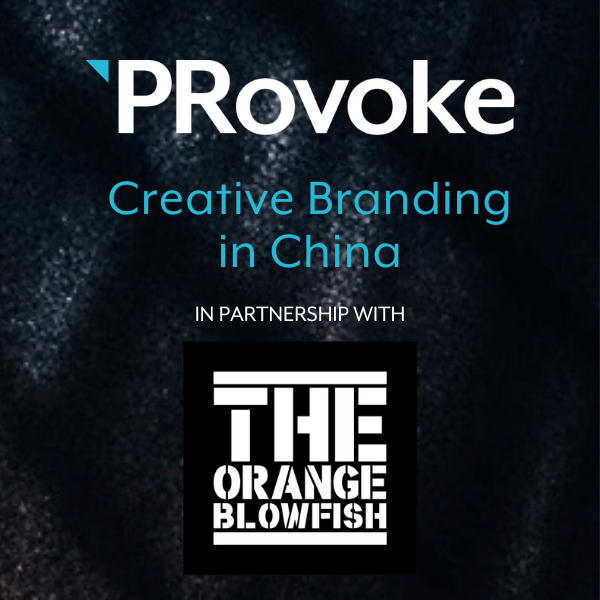Jean Chua 28 Sep 2021 // 8:18PM GMT
.jpeg)
To delve deeper into the cultural differences between the West and the East — and explore what it would take for brands to be successful in China — we spoke with Siu Tang, founder and creative director of The Orangeblowfish. Since establishing the agency in 2012, Tang has led creative branding, rebranding, design, EDG (environmental design graphics) and integrated campaigns for L’Oreal Group, LinkedIn, Google, Asics, Costa Coffee, Starbucks, Mindshare, Dunkin’ Donuts, Yum China, Ford, ABInBev and more.
Q: What are your observations around Western vs Eastern approaches to creativity?
Siu Tang: When you are working with any brand from a culture different from your own, as the creative lead, it’s important to learn and have a deep understanding of the local culture and its subtle nuances.
I’ve been living and working in China for more than 13 years. When I first arrived, I felt that China and the East were perceived as secondary markets to other countries. A brand’s headquarter culture and values, including the brand’s home creativity and campaigns, were simply moved and dropped into China without any localization efforts. Some brands, surprisingly, still do this today. And the truth of the matter is that Chinese consumers no longer pay attention to these brands who ignore China’s heritage and local culture.
For Chinese consumers to pay attention to any brand in China, its key messages including visuals, need to speak to them. To my amazement, global brand owners who have never been to China seem to forget that Chinese consumers are very well-traveled, some of whom have studied and worked overseas for several years — they have experienced the world, so to speak. These world travelers who are ethnic Chinese hold the key to bridging the West and China and know what works and doesn’t for the Chinese market.
More important to note is that we’re seeing an increase in National Wave “国潮“ (pronounced “Guo Chao”); brands that are able to develop messages and creative campaigns that appeal to and resonate with Chinese consumers will succeed.
Q: This means that a successful branding strategy would have to involve teams that meld Western and Eastern styles. What factors would you say are important for successfully managing and working with such cross-culture creative teams?
Siu Tang: As a brand grows globally, branding becomes increasingly complex due to local cultural sensitivities. At The Orangeblowfish, our sweet spot is localizing a global brand’s DNA, so that it has local market relevance and makes positive impact on the Chinese market. We work with Fortune 500 companies and local startups, and our brand stakeholders are based all over the world, which means our project creative teams are culturally diverse. This diversity, in part, is a good thing as we all have something rich, unique and different to bring to the table — and it strengthens our creative potential. Cross-cultural team collaboration, however, is also complex and has many different hidden layers perhaps not as prominent when working with a single-culture team. For any multi-cultural team to succeed, it’s important that all team members appreciate and respect each other’s diverse culture and upbringing, team dynamics, offer transparent and on-time communication, and individual buy-in is solicited prior to a formal meeting.
Q: What impact do you think the pandemic will have on creative trends in China?
Siu Tang: China is a hot market. BBC reported that China’s economy grew 18.3% in the first quarter of 2021 compared to the same quarter last year. We’ve seen a slew of “China trends” articles pop up; however, it’s too early to say which of these trends will truly stick as a result of the pandemic.
Even prior to the pandemic, we were starting to notice that China was increasingly focusing on brand messages and campaigns that focus on the local consumer. When the borders re-open, brands new to China that don’t know how to successfully adapt their brand communication to a Chinese audience will find it difficult to appeal to their target audience.
We do think that that brands that want to be successful in China need to find the perfect balance between Traditional versus Modern; Online versus Offline; and Pleasing versus Leading.
Q: What is the most exciting branding trend in China?
Siu Tang: Sustainability has finally taken root and it matters more than ever in China. When we are approached by brands to develop a creative solution, the topic of sustainability is always the focus. As the pandemic continues to dominate our lives, brands in China are re-assessing the impact of their supply chain on the planet. As such, when we’re developing a creative solution, we’re thinking about what sustainability approaches, materials and strategies we can adopt to reduce the impact on the environment.
Q: Will the lines between the two parts of the world become increasingly blurred?
Siu Tang: It’s been interesting to see the impact of the pandemic on creative brand communications in China. As the pandemic continues, I feel that the separation between markets will widen as brands focus on localizing campaigns for the domestic market.
China is a self-sufficient country. With a population of more than 1.4 billion, its domestic demand seems to be contributing to a significant part of economic growth. And with China focusing more on National Wave (国潮), when the borders do open, foreign brands new to or absent from China will have a steep learning curve when adapting their marketing campaigns to the local market.
The gap between China and the rest of the world, and between neighboring countries, may continue to widen if borders remain closed due to the pandemic. Hence, the greater need for cross-border collaboration of international creative industries.
PRovoke Media has partnered with The Orangeblowfish on a series exploring how brands miss opportunities in China by not understanding how to adapt. Read the full series here.



































.jpg)


















